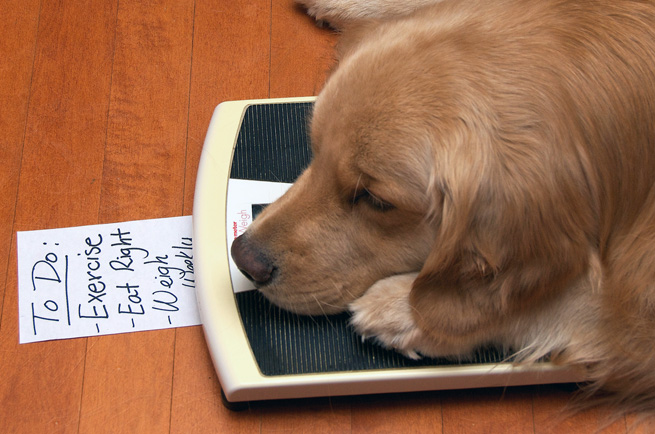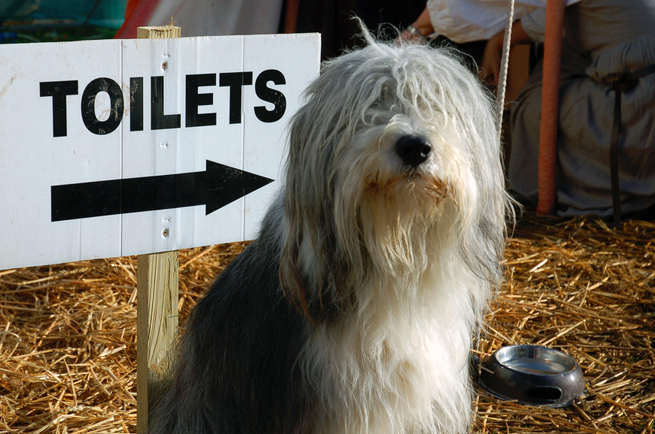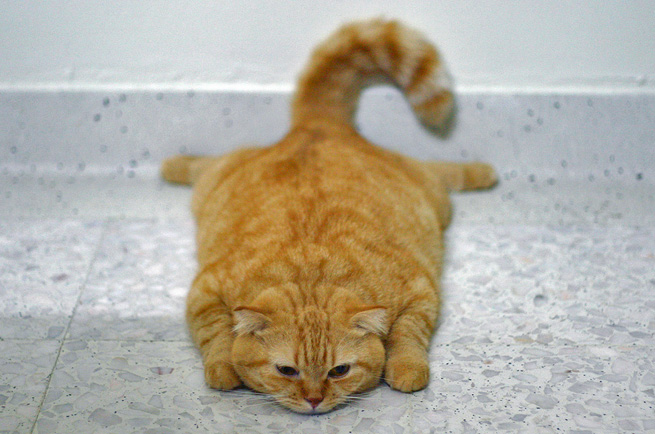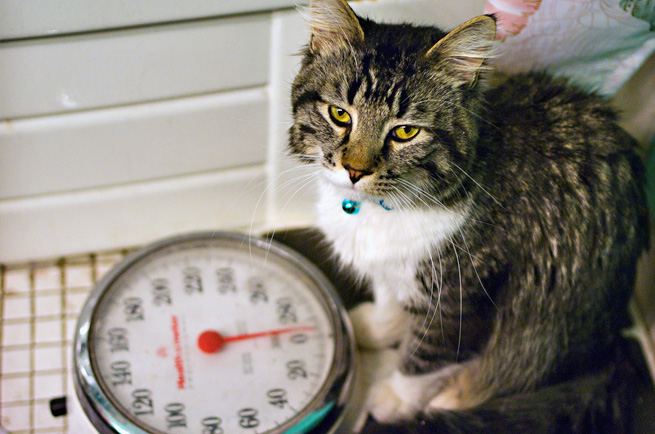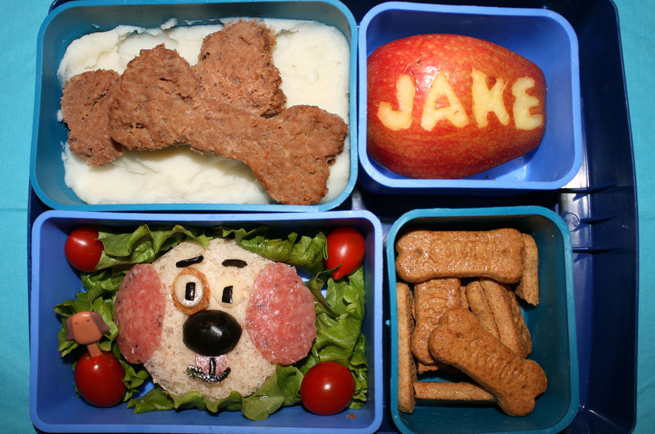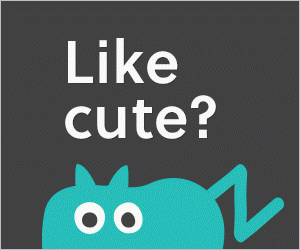What to feed your new kitten
Kittens are fluffy and adorable but they come with a kitbag full of responsibilities—one of which is what you feed your new kitten.
21 Mar 2016 By Leanne Philpott Comments
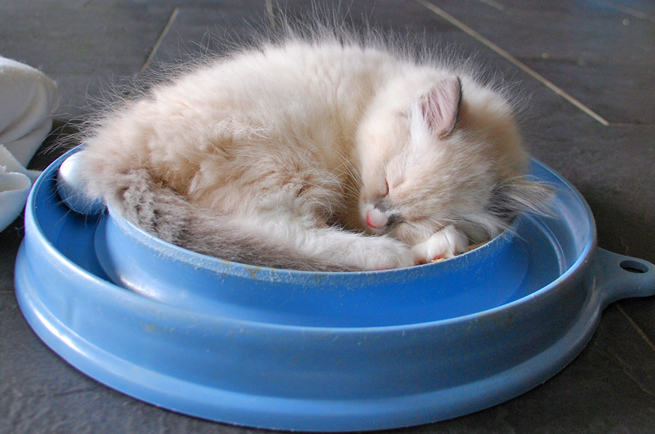
So the question is, what food should you serve Simba up?
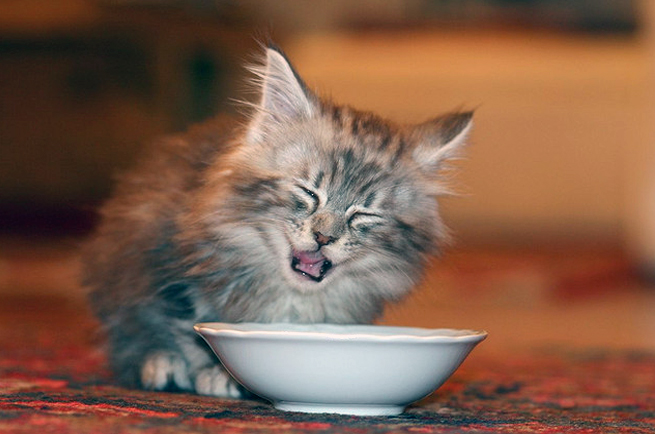
What to feed your new kitten
Well, cats are carnivores, so Little Miss Meow is a mini-meat-eater, which means dishing up high-quality, animal protein will keep you kitten in puurfect health.
If you head to the pet food aisle of the supermarket you’ll notice there’s dry cat food and wet (tinned, or sometimes it comes in a sleek little pouch) cat food. So that you don’t find yourself stood staring at your options with a kinda silly confused look on your face, here’s the intel on both…
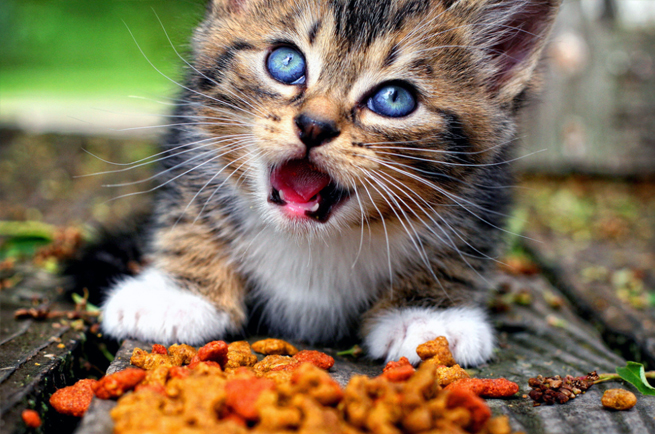
Dry cat food
It’s dry, which is a no brainer—but because it’s dry it can be left out during the day for kitty to snack on. Dry cat food is perfect for those people who work during the day and can’t be home to feed their kitty.
The nature of dry cat food also means way less mess (We like!). Plus its crunchy texture helps to target tartar and plaque on pussy’s teeth.
Dry food is usually only around 10% water so you will need to make sure your kitten is drinking additional water to avoid dehydration—which can cause health problems.
Dry cat food is usually less expensive (so more economical) than wet cat food too.
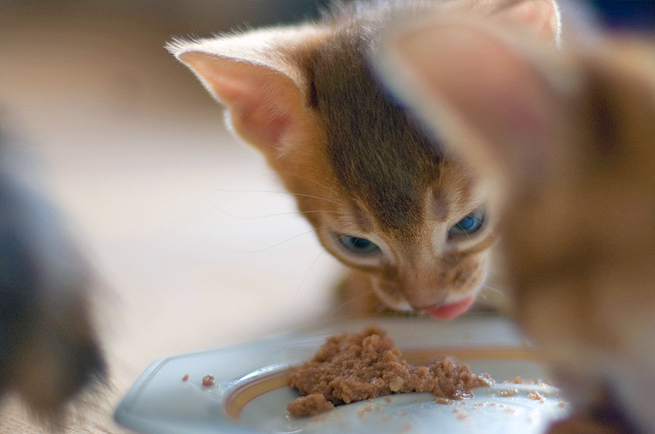
Wet cat food
Wet cat food is, well, wet! It actually has higher water content than dry cat food so you needn’t worry too much about your kitten suffering from dehydration.
Given that there’s no crunch in wet food, a purely wet diet can lead to dental issues—but this can be overcome if you schedule Simba in for regular dental checks or treat him to a handful of cat dental biscuits (Yes, they exist!).
So really, neither dry nor wet cat food is better—it’s more about choosing the one with the best, high quality ingredients. Meat should top the ingredient list and avoid meat by-products.
Yes, a quality high-grade cat food will be more expensive but think of all the vet bills you can potentially avoid.
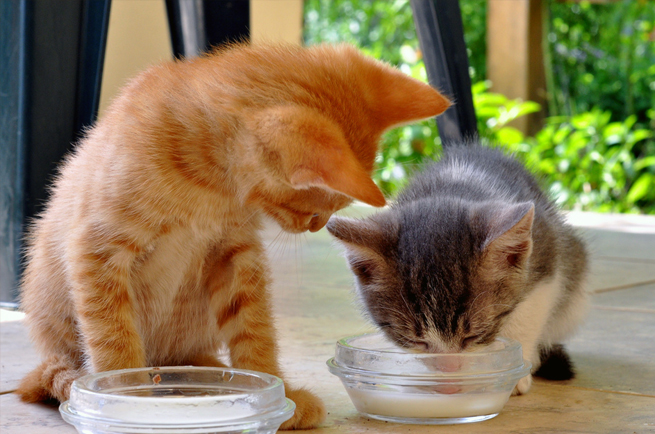
Tips on feeding your kitten
- If you have any concerns about your kitten’s diet, visit your vet
- Premium quality kitten food is best
- For variety you can offer your kitten human-grade diced meat (avoid any that contain preservatives)
- Like puppies, kittens can enjoy a meaty bone (good for teeth), just be sure to supervise
- Tinned fish can be used as a treat
If you’re still feeling a little puurplexed about deciding between wet and dry cat food remember, at the end of the day, if you feed your kitten premium quality cat food (wet or dry) it’ll flourish into a cool cat.
21 Mar 2016 By Leanne Philpott Comments
comments powered by Disqus
